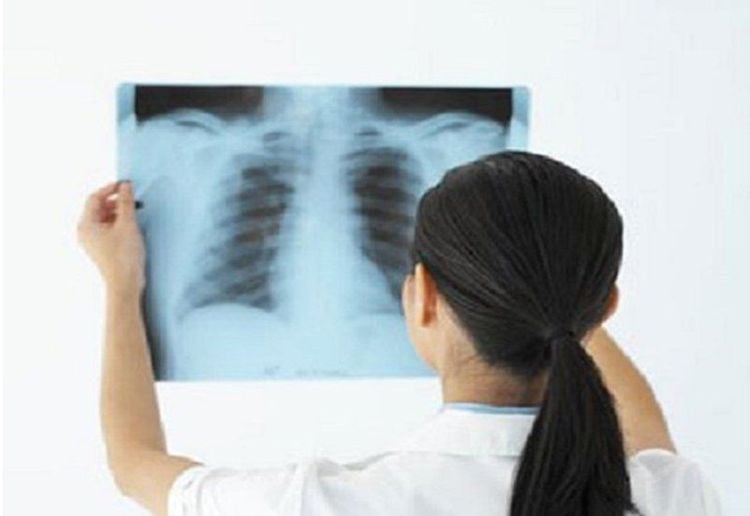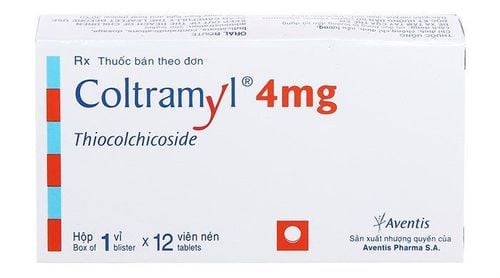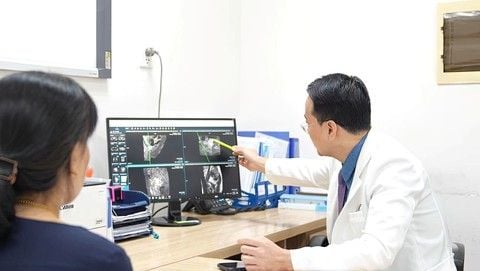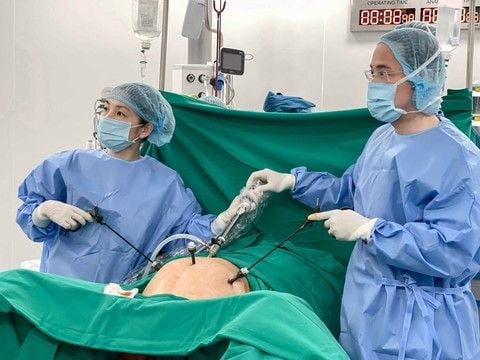Intercostal neuralgia is a common condition caused by many factors, such as incorrect movement, trauma, infection, or poisoning. Sometimes, intercostal neuralgia of unknown cause is called primary intercostal neuralgia.
1. Intercostal neuralgia
Intercostal neuralgia is a common syndrome today, caused by many factors.
The intercostal nerves originate from the thoracic spinal cord segments T1-T12. Each thoracic spinal nerve root, after passing through the foramen, divides into two branches:
• Anterior branch: Also known as the ventral branch, it innervates the skin and muscles of the anterior abdomen and chest.
• Posterior branch: Also known as the dorsal branch, it innervates the skin and muscles of the back.
The intercostal nerves, along with capillaries, form a bundle. The intercostal nerve is located below the costal margin of each rib, after separating from the common root. Therefore, damage or disease of the spinal cord, ribs, spine, or chest wall directly affects the intercostal nerves. Because the intercostal nerves are superficial, they are easily affected by external factors.
Symptoms of intercostal neuralgia include episodic at appears in episodes along the intercostal nerves, chest pain, and rib pain. Patients often experience pain on only one side; the pain may radiate from the chest along the ribs to the back, near the spine.
Intercostal neuralgia often occurs with infectious diseases such as tuberculosis, influenza, rheumatism, lung diseases, pleural diseases, liver disease, and heart disease.

2. Causes of intercostal neuralgia
There are many causes of intercostal neuralgia, such as:
• Spinal degeneration: Aching, not acute, and accompanied by dull pain in the thoracic spine when moving and even at rest. Often found in the elderly; pressing on the point next to the spine on both sides causes the patient to feel slight, comfortable pain.
• Spinal cord disease: Intercostal neuralgia is often an early symptom of nerve root and extraspinal tumors. Patients feel pain on one side, clearly localized, belt-like pain on one side of the rib cage.
• Infection: Intercostal neuralgia often occurs due to shingles, with manifestations in two stages: the acute stage often starts with burning pain in a rib area. One or two days later, blisters appear, tending to spread. The patient feels itchy and painful, and uncomfortable when rubbing them.
• Some other causes include spinal trauma, poisoning, diabetes, spinal tuberculosis, spinal cancer, and polyneuropathy, which rarely damage the intercostal nerves.
In addition, some cases of intercostal neuralgia with unknown causes are called primary intercostal neuralgia. The patient may have pain on one or both sides in the area next to the spine or the intervertebral-shoulder area; the pain spreads along the intercostal space to the front. The pain is dull and worsens with deep breaths, changes in position, sneezing, and coughing. It is often misdiagnosed as a lung disease.
3. Diagnosis of intercostal neuralgia
Intercostal neuralgia is often misdiagnosed as a lung or heart condition. Therefore, a physician needs to conduct a clinical examination to make a differential diagnosis. Additionally, patients may require some additional paraclinical tests, including:
• Routine X-ray: to evaluate the spine and vertebrae to identify potential causes such as spinal degeneration or tuberculosis.
• Magnetic resonance imaging (MRI): to accurately diagnose causes such as spinal, disc, and spinal cord diseases (degeneration, disc herniation and protrusion, spinal cord tumors, spinal trauma, and inflammation such as spondylitis, infected disc, and tuberculosis).
• Basic tests: complete blood count, erythrocyte sedimentation rate, and urinalysis.
• Blood biochemistry tests: blood urea nitrogen (BUN), creatinine, AST, and ALT.

4. Treatment of intercostal neuralgia
First, the doctor will prioritize pain management, then treat the underlying cause. Some drugs used to treat nerve pain include:
• Common pain relievers such as paracetamol and diclofenac. Paracetamol should be used with caution in patients with a history of liver or kidney disease. Diclofenac should be avoided in patients with a history of gastric or duodenal ulcers. The drug should be taken after meals, divided into 2–3 doses daily.
• Drugs to treat nerve pain: Gabapentinoids, which are essentially anticonvulsants, have analgesic effects in cases of nerve and root damage. Because they affect the central nervous system, some patients experience dizziness and lightheadedness. Usually, low doses are used, gradually increasing until effective. The drug should be taken before bed or a nap and can be used for several months.
• Skeletal muscle relaxants: Myonal and Mydocalm are only used in cases of severe pain or muscle contraction in the affected rib area, at low doses. Use after meals, with caution in patients with gastric or duodenal diseases, the elderly, and children due to weaker skeletal muscle systems. Do not use skeletal muscle relaxants in patients with myasthenia gravis.
• Vitamin B group: B1, B6, and B12 are important for cell metabolism, especially nerve cells and their myelin sheaths.
In addition, the doctor will coordinate treatment according to the cause. Patients should avoid poor posture and excessive movement. Avoid work-related, traffic, and other accidents, as well as strenuous daily activities.
Intercostal neuralgia is a symptom of many diseases; early detection and active treatment are necessary. When experiencing pain in the rib area or other unusual symptoms, seek immediate medical attention for timely examination and treatment.
To arrange an appointment, please call HOTLINE or make your reservation directly HERE. You may also download the MyVinmec app to schedule appointments faster and manage your reservations more conveniently.








